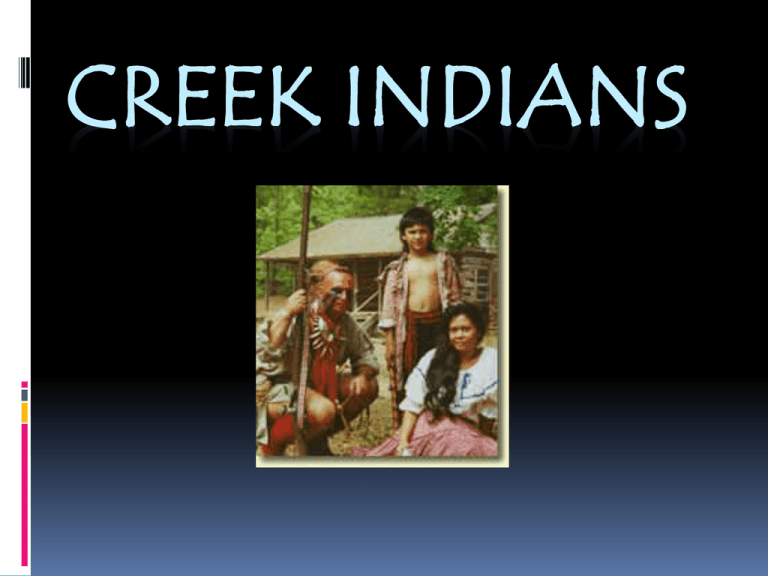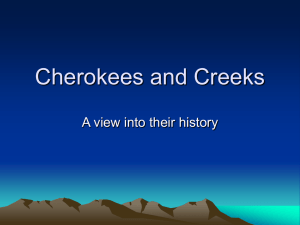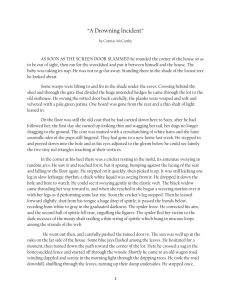Creek Indians - SSFile
advertisement

CREEK INDIANS Where the Creeks lived The Creek Indians lived south of the Etowah river in Georgia. They also lived in parts of Alabama. Creek Indians made their homes along rivers and creeks. Early Creek Homes The Creek Indians lived in towns of 400 to 600 people. Creek towns had a large open area called a plaza for meetings as well as a large, round building which would hold all of the people in a town. Creek houses were made of rive rcane and plaster, with thatched roofs. Grass House Wigwam House Family Roles Creek Indian children do the same things all children do--play with each other, go to school and help around the house. Men hunted and gathered sticks, leaves and animal hide to make their houses. Women harvested crops and were in charge of farming, property and family. Creek Clothing Creek men wore breechcloths and leather leggings. Creek women wore wraparound skirts and mantles made of deerskin or woven fiber. The Creeks also wore moccasins on their feet. Creek Indian Tools and Weapons • Creek hunters primarily used bows and arrows. Fishermen used fishing spears, nets, or hooks made of bone. • In war, Creek men fired their bows or fought with tomahawks and war clubs. Creek warriors also used hide shields to defend themselves. What did Creeks eat? The Creeks were farming people. Creek dishes included cornbread, soups, and stews. Accomplishments Creek Indians were very intelligent. They lived off the land and natural resources. Creek Indians were very smart, resourceful and healthy. They bathed and brushed their teeth daily. They had a highly organized social system with strict rules of personal conduct and respect for one another. The Cherokee Live mostly in North Carolina and Oklahoma Early Cherokee Housing Circular frame of mud, animal hair, grass, and clay. After the 1800s, they started building log cabins to live in. Family Roles Men hunted for food, built houses, made tools, weapons and canoes, and were protectors. Women planted crops, prepared meals, and wove baskets. Cherokee Clothing Tools Crops ACCOMPLISHMENTS: In 1821, a Cherokee man named Sequoyah, created a syllabary made up of 85 characters. He created this because he wanted to be able to write to his family using his own language.





















